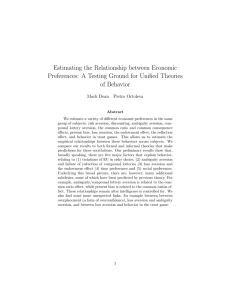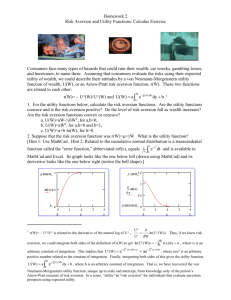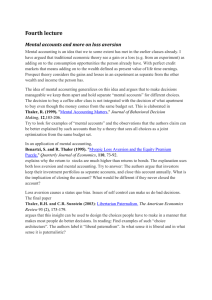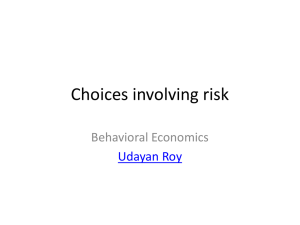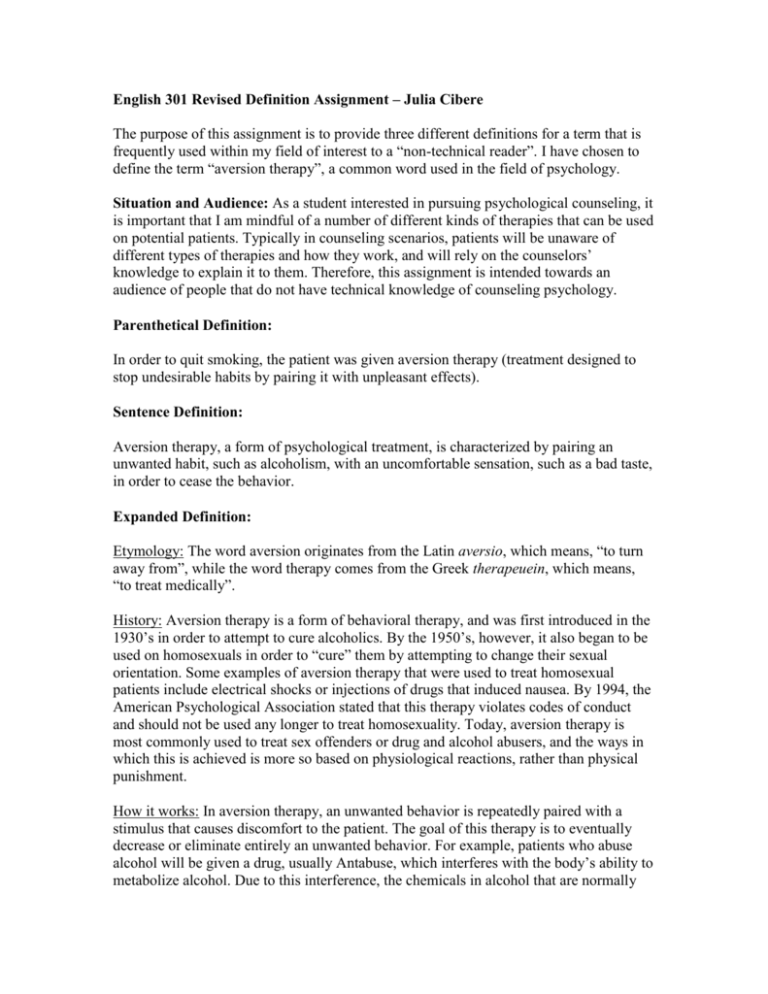
English 301 Revised Definition Assignment – Julia Cibere
The purpose of this assignment is to provide three different definitions for a term that is
frequently used within my field of interest to a “non-technical reader”. I have chosen to
define the term “aversion therapy”, a common word used in the field of psychology.
Situation and Audience: As a student interested in pursuing psychological counseling, it
is important that I am mindful of a number of different kinds of therapies that can be used
on potential patients. Typically in counseling scenarios, patients will be unaware of
different types of therapies and how they work, and will rely on the counselors’
knowledge to explain it to them. Therefore, this assignment is intended towards an
audience of people that do not have technical knowledge of counseling psychology.
Parenthetical Definition:
In order to quit smoking, the patient was given aversion therapy (treatment designed to
stop undesirable habits by pairing it with unpleasant effects).
Sentence Definition:
Aversion therapy, a form of psychological treatment, is characterized by pairing an
unwanted habit, such as alcoholism, with an uncomfortable sensation, such as a bad taste,
in order to cease the behavior.
Expanded Definition:
Etymology: The word aversion originates from the Latin aversio, which means, “to turn
away from”, while the word therapy comes from the Greek therapeuein, which means,
“to treat medically”.
History: Aversion therapy is a form of behavioral therapy, and was first introduced in the
1930’s in order to attempt to cure alcoholics. By the 1950’s, however, it also began to be
used on homosexuals in order to “cure” them by attempting to change their sexual
orientation. Some examples of aversion therapy that were used to treat homosexual
patients include electrical shocks or injections of drugs that induced nausea. By 1994, the
American Psychological Association stated that this therapy violates codes of conduct
and should not be used any longer to treat homosexuality. Today, aversion therapy is
most commonly used to treat sex offenders or drug and alcohol abusers, and the ways in
which this is achieved is more so based on physiological reactions, rather than physical
punishment.
How it works: In aversion therapy, an unwanted behavior is repeatedly paired with a
stimulus that causes discomfort to the patient. The goal of this therapy is to eventually
decrease or eliminate entirely an unwanted behavior. For example, patients who abuse
alcohol will be given a drug, usually Antabuse, which interferes with the body’s ability to
metabolize alcohol. Due to this interference, the chemicals in alcohol that are normally
broken down by the body are retained, causing strong side effects such as nausea,
vomiting, and vertigo. According to aversion therapy, if these unpleasant feelings are
repeatedly associated with the smell or taste of alcohol, it will cause patients to develop
an aversion to this behavior.
Figure 1. Example of aversion therapy: by pairing Ipecac (a substance that induces
vomiting) with alcohol, patients will begin to associate the unpleasant feelings with the
unwanted behavior. After repeated pairing, this will cause the behavior to stop.
Source: http://www.slideshare.net/amnamirza/mediaabnormal
How it is used: Although this type of therapy is used less commonly than others in
psychology, there are still situations in which it may be applied. Most commonly,
aversion therapy is used to treat child sex offenders. Individuals are asked to fantasize
about their deviant sexual interest, usually done by reading a script of a sexual fantasy
that involves a child. While reading this script, ammonia smelling salts are waved around
the individual, producing undesirable sensations that eventually become associated with
the deviant behavior, leading it to stop. In less serious cases, aversion therapy can also be
used to stop bad habits, such as nail biting. If an individual has a habit of biting their nails
while under stress, for example, they can choose to paint their nails with a foul tasting
polish that will cause their stomach to feel upset. Once this feeling becomes associated
with the nail biting, it is probable that the habit will stop.
Sources:
1. Aversion/ therapy (n.d.). In Online Etymology Dictionary. Retrieved from
http://www.etymonline.com/
2. Aversion Therapy: History, Information, and Resources (n.d.). In The Free
Resource. Retrieved from http://thefreeresource.com/aversion-therapy-historyinformation-and-resources/
3. Nausea Aversion Therapy Treatment. (n.d.). In Alcohol Rehab. Retrieved from
http://alcoholrehab.com/drug-addiction-treatment/nausea-aversion-therapytreatment/
4. Behavioral Treatment. (n.d.) In The Institute for Sexual Wellness. Retrieved from
http://www.instituteforsexualwellness.org/methodology/behavioral.php

